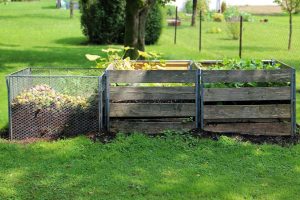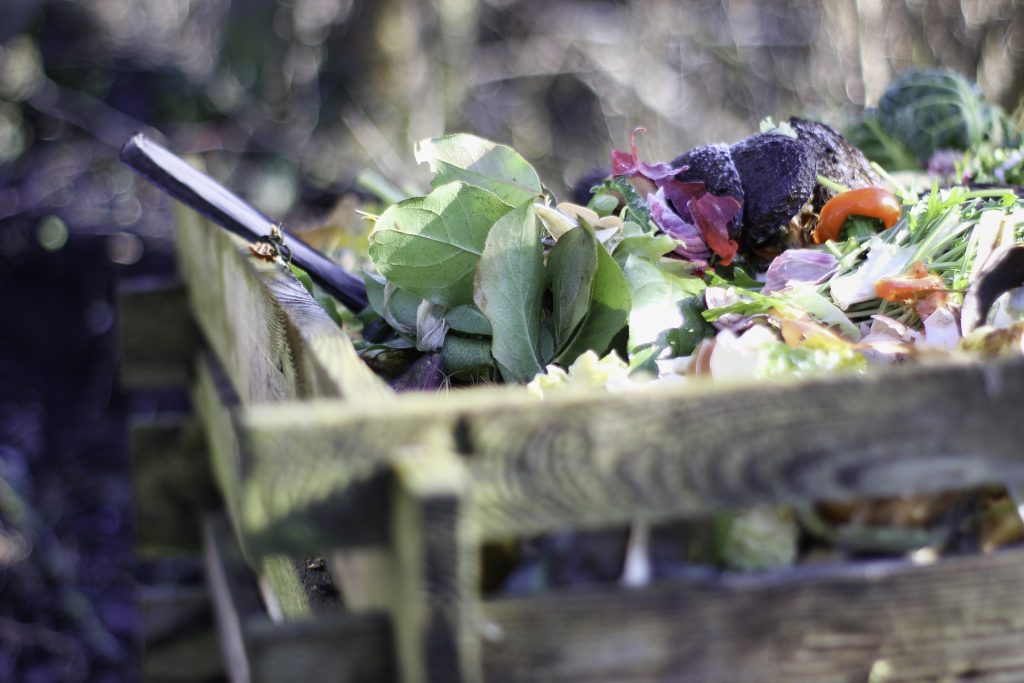
Whether you dream of living off the land or simply want to grow a few veggies on your patio, it’s no secret that compost is invaluable to gardeners. This nutrient-dense material enhances the soil, adding critical elements that will allow your plants to thrive.
If you’ve been curious about what, exactly, organic compost is and how to create your own, keep reading to learn everything you need to know.
What is Organic Compost?
To begin, let’s take a look at what compost is. Put simply, this nutrient-rich material is a matter that’s in a state of decomposition. When oxygen is present in your compost pile, microorganisms break down waste, such as plants and even some cloth material, converting it into a fiber-rich substance.
Organic compost is a very complex ecosystem. Thousands of tiny organisms, from bacteria and fungi to mites and protozoa, live in your bin or pile. Of course, insects and worms are a part of this ecosystem as well. Each of these organisms works together to create a balanced environment that is ultimately great for your plants.
Why Should You Compost?
There are several reasons to consider composting. The most obvious reason is that compost is excellent for your plants’ growth. Unlike fertilizers, your compost releases nutrients like manganese and iron slowly over time. That means your garden can be nourished for years, with little effort. Additionally, many of these nutrients aren’t included in commercial fertilizers.
Another reason to consider compost is that it’s great for the environment. Humans generate a significant amount of food waste – millions of tons each year. When this waste is dumped in landfills, it decomposes and emits methane gas. Methane is responsible for an estimated 20 percent of global warming! By composting, you can have a significant impact on the planet’s health.
Finally, organic compost is a fun and easy money saver. You’ll be less likely to need to fertilize your garden, eliminating the need for expensive commercial products. You’ll save on waste pickup, as well. Get the kids involved and create a fun learning experience. As you become more experienced with composting, you can even consider adding worms to the lesson!
What Can I Compost?
Before you begin making your own organic compost, it’s essential to learn what can and cannot go into your compost bin or pile. What you compost is vital for two reasons. First, you want to have a balanced mix of materials so that your compost will be beneficial to the soil. Secondly, some materials will rot, attract rodents and insects.
The waste you can compost includes general household food waste from vegetables, fruit and even your coffee grounds. You can compost paper and cardboard, though these may take slightly longer to break down. You can also include sawdust, eggshells, your cotton rags and even dryer lint!
A good rule of thumb to follow is to ensure that what you’re adding to your bin contains no chemicals. If you buy organic foods from the grocery store, you’re already a step ahead of the crowd. Don’t be afraid to think outside the box; materials like pet fur and fireplace ashes are also compostable. If you’re unsure, do a little research before you add anything to your bin.
What Should I Not Compost?
There are a few items that should not make their way to your compost bin. Fatty, greasy food waste should not be included, nor should any dairy, meat or bones. You’ll run the risk of attracting various pests if you attempt this, so it’s best to throw these items into the trash.
You can compost some animal waste. For instance, chicken waste can be beneficial to your compost. However, dog, human and cat waste may contain parasites and other contaminants that can be dangerous to your family.
Finally, some yard waste is compostable, but be sure you’re not adding materials that you’ve treated with chemicals. Pesticides, herbicides and chemical fertilizers will be detrimental to your compost, so leave those out.
How to Create Compost
Making your own compost is quite simple. You don’t need any fancy equipment, though some may choose to invest in a compost bin or tumbler. In reality, you’ll just need a few square feet of land and a shovel. Your plot of land should be shady, away from direct sunlight. It’s best to have a water source nearby as well.
Build a foundation for your pile; this should include sticks or straw. This will enable your compost to remain aerated. Then, begin building the pile itself. Start with a layer of “browns” and then add “greens” to the mix. Alternate this for a few layers for a perfect compost mix.
The formula you’ll need to follow to build and add to your compost pile is about two parts “brown” to one part “green.” Your browns can include:
- Leaves
- Hay
- Pine straw
- Cardboard
- Paper
- Fabrics
- Sawdust
Greens in your organic compost may include:
- Coffee and tea
- Fruit and veggie peels and scraps
- Eggshells
- Safe manures, like chicken or cow
As you add to your compost pile, lightly moisten it with your garden hose. Don’t saturate the mix, as that may cause it to become slimy. You’ll want to occasionally use a shovel to turn your compost pile, but it is otherwise self-maintaining.
The key to building a successful compost pile is, in essence, doing nothing! You’ll need to check that your materials are warm, moist and not too wet. Otherwise, however, you can essentially leave it alone.
Compost: An Eco-Friendly Choice
Whether you’re just beginning gardening or are looking for a more earth-conscious way to grow healthy, beautiful plants, composting is one of the easiest ways to both protect the planet and nourish your plants. You’ll need very few supplies, and starting your compost pile is very simple.
Eliminating the need for chemical fertilizers is both healthy and responsible, so why not get started today? No matter the time of year, you can begin to compost right in your own backyard.

[…] Organic fertilizers are prepared by composting organic materials like animal waste, fish meal, cottonseed meal, blood meal, bone meal, fish emulsion, liquid seaweed, milk, leaves, vegetables, plant food, etc. […]